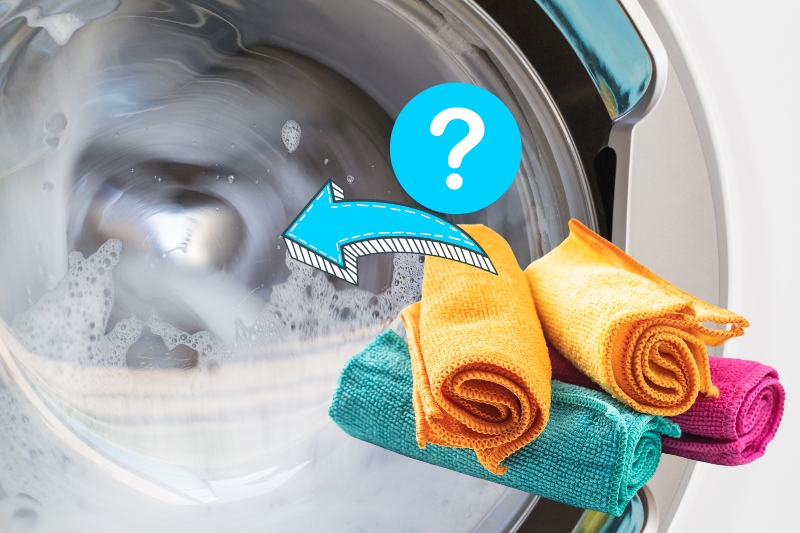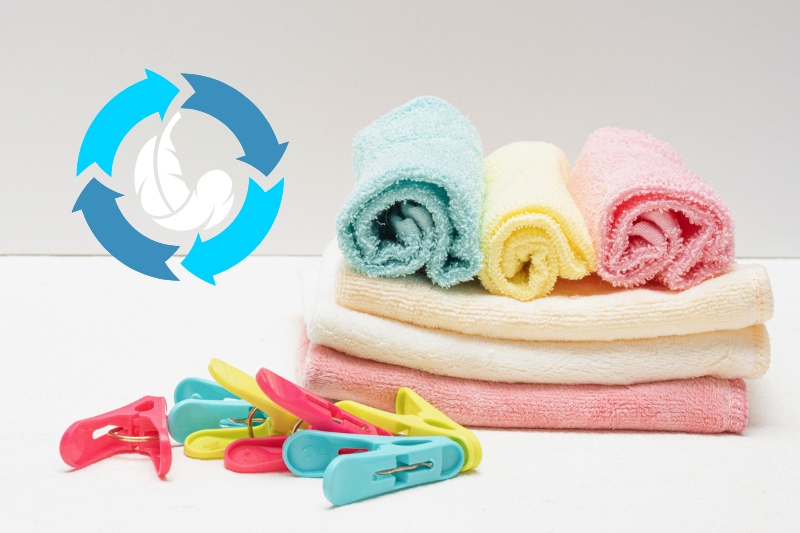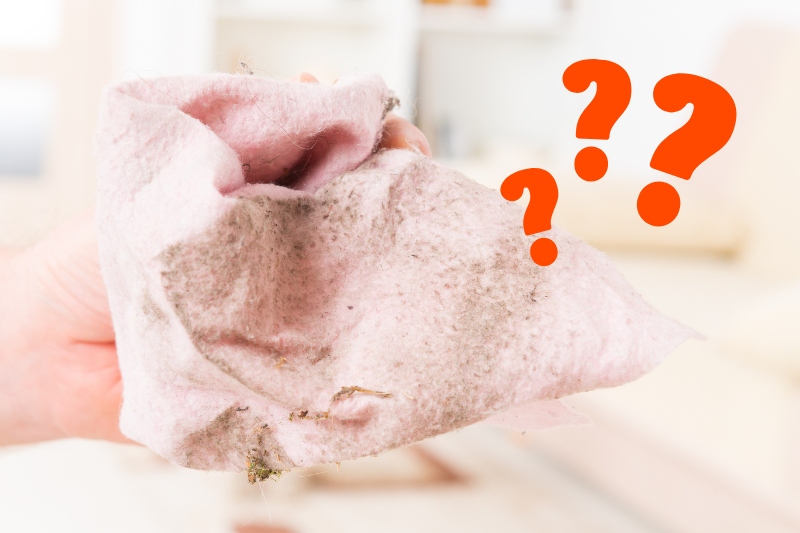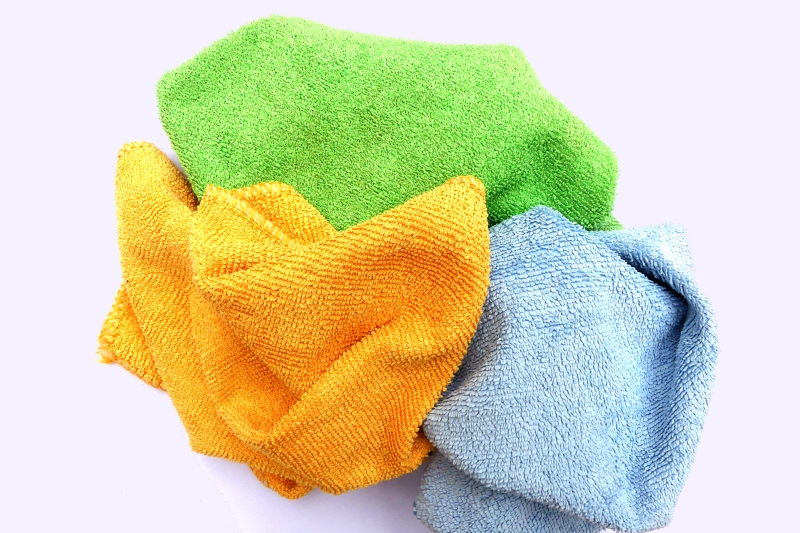Thanks to their lint-free and non-abrasive qualities, microfibre cloths are a go-to cleaning tool for a variety of surfaces.
The small gaps between their fine synthetic fibres make them ideal for collecting dust particles, and they’re also great for polishing glass and metal.
But what’s the best way to keep them clean? We’re glad you asked.
In this post, we’ll teach you how to wash microfibre cloths effectively and safely, to keep them in great condition for longer.
How to Refresh Microfibre Cloths by Hand

One of the best ways to extend the life of your microfibre cloths is to refresh them in between laundering, instead of running them through the machine after every use.
For example, if you only use cloths for light dusting, rinsing them should be sufficient for at least 3 uses and will help to prevent wear.
Start by shaking off any loose dust into the bin, then rinse the cloth in the sink with warm running water.
You can also apply a drop of washing up liquid to help remove marks and leave the cloth smelling fresher.
Gently rub the soap through the fabric to loosen any remaining dirt, then rinse thoroughly, wring out and hang to air dry.
How to Wash Microfibre Cloths in the Washing Machine

If you’ve used a microfibre cloth to clean your kitchen or bathroom, or to apply wax to your car, then you’ll need to launder it.
While this can be done by hand, washing cloths in a washing machine is generally easier and more effective for removing bacteria and grease.
Things to bear in mind:
- Opt for a warm cycle, as hot temperatures may melt the synthetic fibres.
- Avoid fabric conditioner as it will coat the cloth’s fibres and reduce its effectiveness.
- Wash microfibre cloths on their own to prevent lint from clothes and towels sticking to the fibres. Heavy cottons can also damage the synthetic fabric through abrasion.
Soak the cloths first
While it may be tempting to throw dirty microfibre cloths straight into the washing machine, soaking them beforehand will aid the cleaning process. This is especially true if they’re very dirty, stained or coated in products such as polish.
There are several different ways to do this. Firstly, you can dissolve some soda crystals in a bucket of hot water, leave it to cool slightly and then submerge the cloths.
Alternatively, you can mix a small amount of non-bio laundry detergent or washing up liquid into some warm water.
Both have grease-busting properties while being gentle enough not to harm the fabric.
With that in mind, if you find any stains at this point, you can also spot treat them at this stage by applying the soap neat and gently rubbing it in.
Whichever product you use, leave the cloths to soak in the warm water solution for around half an hour, then rinse, wring out and place into the washing machine.
Tip: if using soda crystals, wear rubber gloves as they can strip natural oils from your skin!
Wash on a gentle cycle

The next step is to wash the cloths on a gentle 40°C cycle or even a more eco-friendly 30°C wash if they’re relatively clean.
Avoid using cycles above 60°C as this could permanently damage the material. You should also stick to a slow spin setting of 600-800 to limit agitation.
You can either use a standard non-bio laundry detergent or a specially designed microfibre cleaner.
If using detergent, opt for liquid as it is gentler than powder and won’t cling to the fibres. You won’t need very much: around 1-2 teaspoons depending on the size of the load.
Finally, instead of fabric conditioner that would fill the gaps between the fibres and render the cloth useless for trapping dust, use white vinegar to soften the cloths instead.
This will help to keep the fabric soft and remove any leftover detergent or product residue during the rinse cycle.
Use a low heat to dry them
To dry your microfibre cloths, you can either hang them up to air dry or tumble dry them.
If tumble drying, select a low heat setting and use dryer balls to help fluff the fibres back up. Though air drying shouldn’t take long as synthetic materials dry much faster than cotton.
Cleaning Very Dirty Microfibre Cloths without Ruining Them

If your cloths are extremely dirty and the above methods fail, there is an alternative that you can try. However, it should only be used as a last resort.
As we’ve already discussed, you typically shouldn’t submerge microfibre cloths in hot water. However, if the fibres are caked in grease or oil and it hasn’t budged after soaking and washing, the below method may help:
- Fill a large pan with water, bring to the boil and add one teaspoon of white vinegar.
- Using tongs, submerge the cloth into the hot water and set a timer for 90 seconds.
- When the time’s up, remove the cloth, place into the sink and leave to cool.
- Wring out the excess water, then wash in the machine as outlined above.
While the high heat isn’t ideal for the fibres, it should help to loosen set-in grime and the short submersion is much safer than a long 90°C wash cycle.
If you’d like more laundry tips, from the best ways to wash towels to the key differences between cotton and synthetic wash cycles, we’ve got you covered.

A proud Yorkshire lass with a love for movies, music and cosy nights in! Once a self-confessed avoider of cleaning, she’s always on the lookout for new ways to make household chores as quick and simple as possible.






